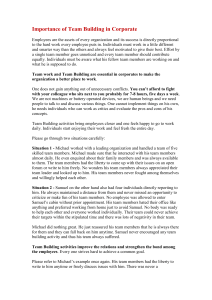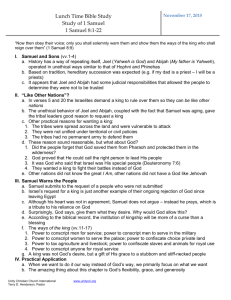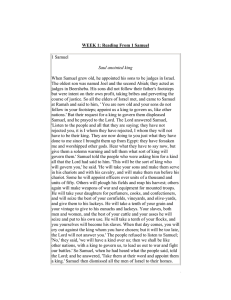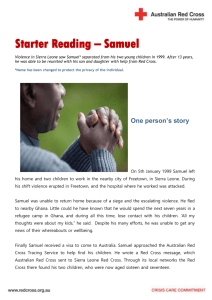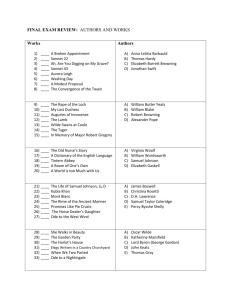Lewis, et al: Medical-Surgical Nursing: Assessment and
advertisement
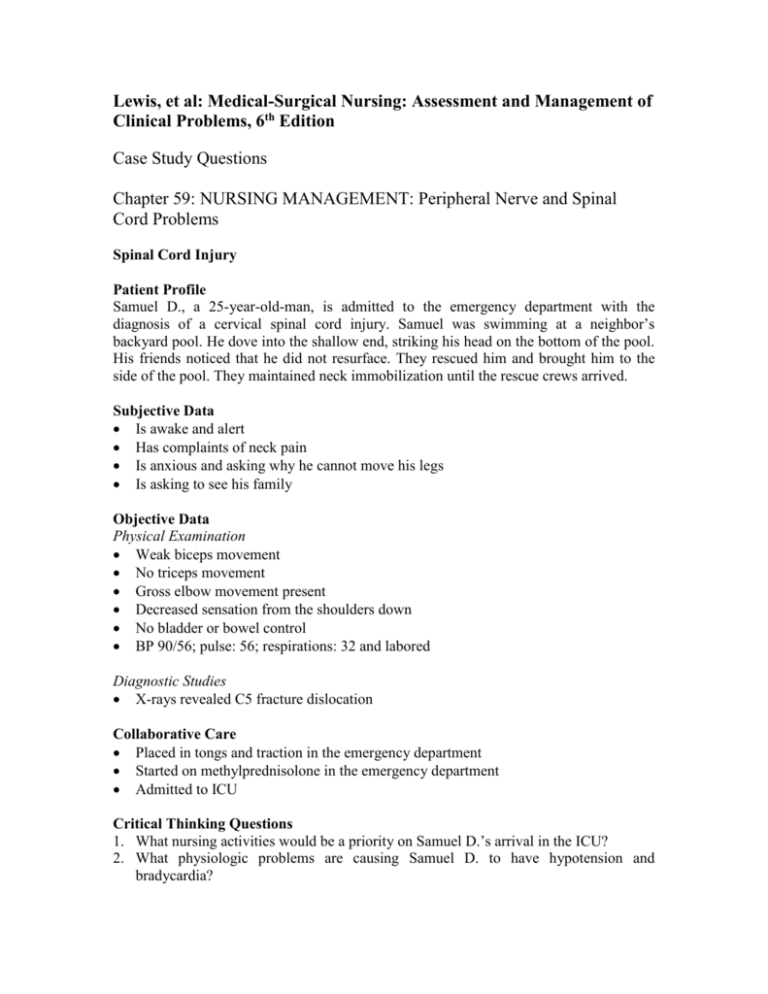
Lewis, et al: Medical-Surgical Nursing: Assessment and Management of Clinical Problems, 6th Edition Case Study Questions Chapter 59: NURSING MANAGEMENT: Peripheral Nerve and Spinal Cord Problems Spinal Cord Injury Patient Profile Samuel D., a 25-year-old-man, is admitted to the emergency department with the diagnosis of a cervical spinal cord injury. Samuel was swimming at a neighbor’s backyard pool. He dove into the shallow end, striking his head on the bottom of the pool. His friends noticed that he did not resurface. They rescued him and brought him to the side of the pool. They maintained neck immobilization until the rescue crews arrived. Subjective Data Is awake and alert Has complaints of neck pain Is anxious and asking why he cannot move his legs Is asking to see his family Objective Data Physical Examination Weak biceps movement No triceps movement Gross elbow movement present Decreased sensation from the shoulders down No bladder or bowel control BP 90/56; pulse: 56; respirations: 32 and labored Diagnostic Studies X-rays revealed C5 fracture dislocation Collaborative Care Placed in tongs and traction in the emergency department Started on methylprednisolone in the emergency department Admitted to ICU Critical Thinking Questions 1. What nursing activities would be a priority on Samuel D.’s arrival in the ICU? 2. What physiologic problems are causing Samuel D. to have hypotension and bradycardia? 3. What would the first line of treatment be for Samuel D.’s hypotension and bradycardia? 4. What signs and symptoms would indicate respiratory distress and what physiologic problem would cause respiratory distress in Samuel D.’s injury state? 5. What can the nurse do to decrease Samuel D.’s anxiety? 6. Based on the assessment data provided, write one or more nursing diagnoses. Are there any collaborative problems?

